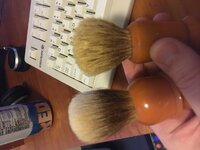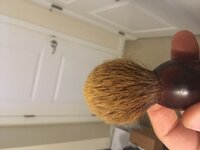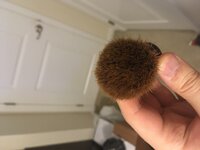Sorry, I have no interest in being a flipper, nor do I resell my own brushes.you should go on eBay and buy every big maker vintage brush with a donut and comb it out and resell it for three times what you bought it for
I have no doubt that undamaged vintage brushes sell for 3x what damaged ones sell for, but I think the vintage brushes with donut holes have just been *used* a LOT more, not necessarily damaged by doing circles.
We will agree to disagree.





